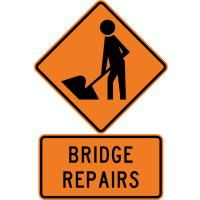Bay Bridge Problems: “Game Changers” or Wicked Witch of the West Syndrome?

Local and state officials overseeing the mop-up after completion of the $6.4-billion San Francisco-Oakland Bay Bridge span allocated up to $4 million this week to find out whether there is a serious problem with the foundation and critical steel rods anchoring the base.
Metropolitan Transportation Commission (MTC) Executive Director Steve Heminger, in the course of a 12-minute television interview, both downplayed its significance and warned of a fearful condition. He referred to the bridge as the “project from hell” and the latest incidents as potential “game changers.”
But he also characterized news reports about problems as a “steady, steady drip,” hardly a deluge, while dialing down present concerns.
“The East span is not like the Wicked Witch of the West,” Heminger joked. “She doesn’t melt on contact with water.” That’s true. San Francisco is not the Winkie Country in the Land of Oz. But Heminger articulated how bad things happen when steel rods anchoring the span get too wet:
“They’ve been stewing in salt water, which is worse than the condition of the rods at the East Pier. The rods at the East Pier were stewing in water for some time, but it was fresh water, not as corrosive as salt water.”
Heminger is chairman of the three-member Bay Area Toll Authority (BATA), which considered the rod problem Monday. The panel includes heads of the California Department of Transportation (Caltrans) and the California Transportation Commission.
The San Francisco Chronicle has written a number of stories about structural problems with the bridge, including last week when one of the tower’s 424 giant steel rods failed a key test. Workers were able to move the rod by tugging on it with a machine.
Caltrans official Dan McElhinney downplayed its significance. “We don't believe it’s corrosion—this bridge is not old enough for corrosion, not with these rods or under this level of loading,” he told the Chronicle. “The bridge is safe.”
If so, it’s probably a safe bridge with a number of cracked anchor rods, according to Berkeley Research Company corrosion expert Lisa Fulton (pdf). “The thing clearly cracked,” she said. “It means there’s little doubt that others are cracked—they just don’t know it.”
The rod in question was tested because it was six inches shorter than other rods. Fulton said that’s because it broke, while others speculated that it may have been manufactured short. They’ll know more soon, after the rod is removed.
There is more than wasted money at stake. The bridge was designated, and designed, as a key, reinforced, transporation corridor in case of a giant earthquake and city survival strategies revolve around that. Heminger said that he thought the big bridge picture was positive.
But “Caltrans didn’t sweat the details,” he said. And broken rods might be some of them. So might the chloride found in saltwater sloshing around in three rod sleeves last week during tests. That could be an indication of problems with saltwater in the foundation. BATA allocated $400,000 to take a closer look.
–Ken Broder
To Learn More:
Bay Bridge: Tests Expedited on Rods Exposed to Water (by Andrew McGall, Bay Area News Group)
Bay Bridge: Tests Expedited on Rods Exposed to Water (by Andrew McGall, Oakland Tribune)
Bay Bridge Revelations Are "Game Changers," Panel Chief Says (by Jaxon Van Derbeken, San Francisco Chronicle)
Plague of Problems Puts Bay Bridge Seismic Safety in Question (by Jaxon Van Derbeken, San Francisco Chronicle)
Official Fingerpointing Stage Begins as Deadline Passes for Bay Bridge Repairs (by Ken Broder, AllGov California)
- Top Stories
- Controversies
- Where is the Money Going?
- California and the Nation
- Appointments and Resignations
- Unusual News
- Latest News
- California Forbids U.S. Immigration Agents from Pretending to be Police
- California Lawmakers Urged to Strip “Self-Dealing” Tax Board of Its Duties
- Big Oil’s Grip on California
- Santa Cruz Police See Homeland Security Betrayal in Use of Gang Roundup as Cover for Immigration Raid
- Oil Companies Face Deadline to Stop Polluting California Groundwater





